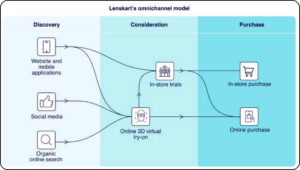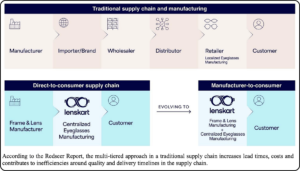Jio’s Giant Leap: Reliance Confirms IPO in Early 2026
Reliance Jio, India’s telecom giant, is set for its largest-ever IPO by mid-2026, as announced by Mukesh Ambani at the 48th AGM—marking a new chapter in the nation’s digital and investment landscape.
A Landmark Announcement by Mukesh Ambani
Reliance Industries, under the leadership of Mukesh Ambani, has set the stage for a historic moment in India’s corporate history: the public listing of its telecom and digital powerhouse, Jio, by the first half of 2026. Unveiled at the company’s recent Annual General Meeting, the decision comes after years of anticipation, with Ambani confirming that all necessary arrangements for the IPO filing are underway.
For investors, analysts, and market watchers, the development underscores Jio’s undeniable growth path and its ambition to drive the next wave of digital transformation in India and globally.
Unprecedented Scale: India’s Biggest Public Offering
Market analysts predict that Jio’s IPO will surpass all previous Indian share sales in both size and excitement. Recent estimates indicate that Reliance Jio may target valuations above ₹10 lakh crore, potentially raising more capital than Hyundai Motor India’s landmark ₹27,870 crore IPO in 2024.
If successful, Jio’s listing could set new benchmarks—making it not just a telecom IPO, but a milestone in Asian capital markets.
Reliance is reportedly considering an initial sale of a modest 5-10% stake, which could still yield record-breaking fundraising—and give early global investors like Meta and Google avenues for profitable exits.
The Growth Engine: What Drives Jio’s IPO
• Universal Connectivity: Every Indian home and business is a target for broadband connectivity, with Jio setting new records through its rapid 5G rollout and a base of over 200 million 5G subscribers
• Digital Services Expansion: The IPO will finance the growth of Jio Smart Home, JioTV+, and targeted digital solutions for enterprises, all aiming to elevate the quality of life and business productivity across India.
• AI Revolution: Ambani envisions Jio as a catalyst for mass adoption of artificial intelligence in India, promising “AI Everywhere for Everyone.” Jio’s technological edge is set to drive innovations in energy, retail, and entertainment.
• Global Outreach: Moving beyond India, Jio intends to leverage proprietary technologies to expand its footprint internationally.
• Financial Fundamentals: Jio’s robust 17% revenue growth and 25% rise in quarterly profit underscore its healthy operational performance and investor appeal. ARPU has risen to ₹208.8, reflecting robust monetization.
This confluence of broadband leadership, digital innovation, and strong financials together positions Reliance Jio as not merely a telecom operator, but a multidimensional technology company.
Investor Insights: Value Creation and Potential Risks
The Jio IPO isn’t just about unlocking value for Reliance shareholders—it’s about reshaping investor access to India’s digital future. Early and institutional investors, such as Meta and Google, are expected to realize substantial returns on their initial bets in Jio. Meanwhile, the new listing is set to open direct ownership opportunities for millions of retail investors, offering them a stake in India’s largest and most influential digital ecosystem.
Potential regulatory changes may also influence the offering: SEBI’s recently proposed amendments could allow mega-sized IPOs to float a smaller percentage of equity, helping markets absorb such massive listings more efficiently.
However, some market experts caution that Reliance’s decision to opt for an IPO rather than a demerger might lead to a “holding company discount” for Reliance Industries shareholders—meaning the full value of Jio may not immediately reflect in the parent company’s market capitalization.
The Road Ahead
With arrangements already in motion and leadership expressing confidence at the AGM, the months ahead are expected to see feverish activity in regulatory filings, roadshows, and market speculation.
If all goes as planned, Jio’s IPO will mark a transformative leap for India’s telecom and digital sectors, with ripple effects across global investment, innovation, and consumer access.
Conclusion
Reliance Jio’s forthcoming IPO marks a landmark moment in Indian corporate history. With strong financials, clear strategic direction, and ambitions spanning both national and global growth, Mukesh Ambani has set the stage for a transformative market shift. All eyes—investors, partners, and consumers alike—will be on India’s digital future as it takes center stage globally.
The image added is for representation purposes only









